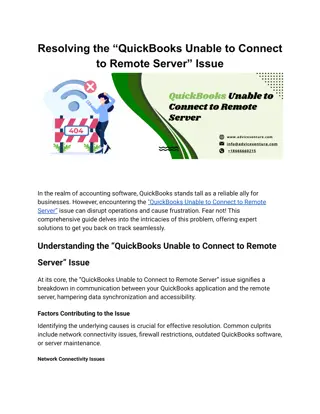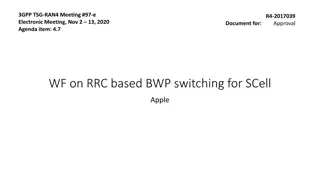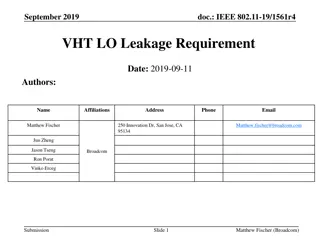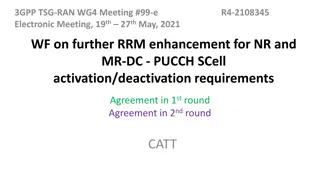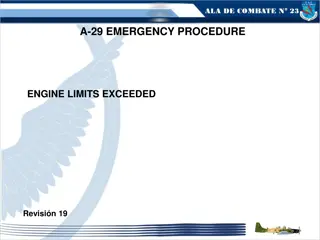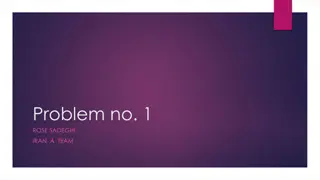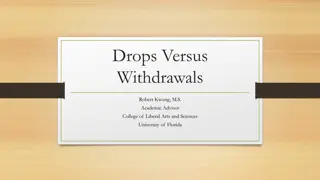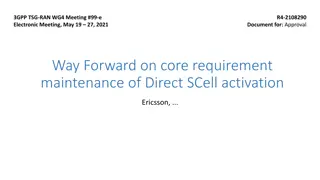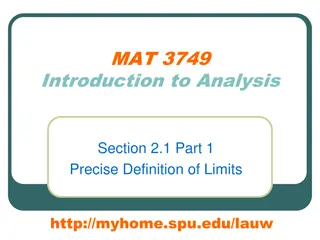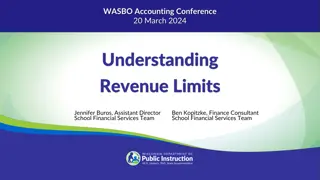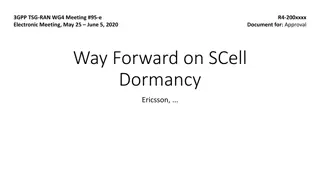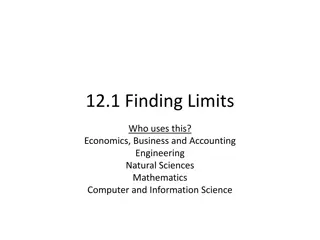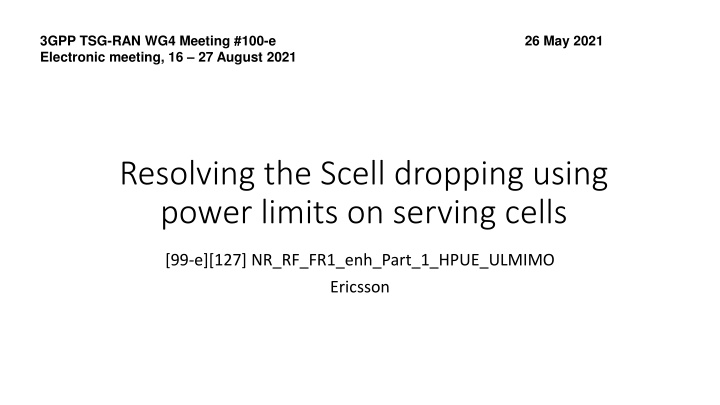
Resolving SCell Dropping Using Power Limits on Serving Cells
Explore the concept of configuring maximum output power for serving cells to prevent SCell dropping in 3GPP.TSG-RAN.WG4 Meeting #100-e. Understand the implications of power limits on UE transmissions and the prioritization rules in place. Various scenarios are discussed where limits apply or do not apply, providing insights for efficient power management in cellular networks.
Download Presentation

Please find below an Image/Link to download the presentation.
The content on the website is provided AS IS for your information and personal use only. It may not be sold, licensed, or shared on other websites without obtaining consent from the author. If you encounter any issues during the download, it is possible that the publisher has removed the file from their server.
You are allowed to download the files provided on this website for personal or commercial use, subject to the condition that they are used lawfully. All files are the property of their respective owners.
The content on the website is provided AS IS for your information and personal use only. It may not be sold, licensed, or shared on other websites without obtaining consent from the author.
E N D
Presentation Transcript
3GPP TSG-RAN WG4 Meeting #100-e Electronic meeting, 16 27 August 2021 26 May 2021 Resolving the Scell dropping using power limits on serving cells [99-e][127] NR_RF_FR1_enh_Part_1_HPUE_ULMIMO Ericsson
Background For any CA band combination, the UE configures a configured maximum output power PCMAX,f,cfor each serving cell c of the configuration a configured maximum output power PCMAXfor the total power of the configuration When the PCMAXis exceeded, the UE prioritizes the transmissions according to the rules in clause 7.5 of 38.213 Configure in RRC relative UE-specific limits on PCMAX,f,con PCMAX,f,con one or more of the serving cells c Can be enabled/disabled by MAC-CE for fast adaptation Only applies for concurrent transmissions If only high priority transmission scheduled this would get all available power up to PCMAX
No limits: dropping or scaling Scells UE output power (PSD) Ppower class Total power back-off MPR PCMAX PCMAX,f,c PPUSCH,f,PCell PCell PUSCH Reduced or dropped PPUSCH,f,SCell Scell PUSCH f BW BW The intra-band case shown above
Limit on Pcell and the Scell scaled UE output power (PSD) Ppower class Total power back-off MPR PCMAX PCMAX,f,SCell PCMAX,f,PCell PPUSCH,f,PCell = PCMAX,f,Pcell (reduced) PCell PUSCH PPUSCH,f,SCell Scell PUSCH f BW BW The UE may still drop the Scell (no restriction in 38.213)
Limit on both cells, dropping will not occur UE output power (PSD) Ppower class Total power back-off MPR PCMAX PCMAX,f,Pcell = PCMAX,f,Scell = 3 dB PCell PUSCH Scell PUSCH f BW BW The actual UE back-off can be any value, both cells are still 3 dB below
If only one cell scheduled, limits do not apply UE output power (PSD) Ppower class Total power back-off MPR PCMAX PCMAX,f,Pcell = PCMAX,f,Scell = 3 dB PCell PUSCH f BW BW No other transmission overlapping a slot of a scheduled transmission Reduces the need for enabling/disabling limits by MAC-CE signaling
Summary The solution feasible for both FR1 and (at least for intra-band for) FR2 RAN1 impact to be confirmed Solved the equal PSD issue in RAN5 ...and can also be used in the field
References 1. R4-2112826, Resolution of the Scell dropping (power reduction) problem , Ericsson 2. [R4-2112811, Introduction of power limits for serving cells of UL CA (FR1), Ericsson 3. [R4-2112816, Introduction of power limits for serving cells of UL CA (FR2), Ericsson


